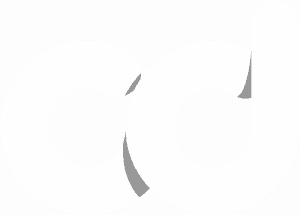On-Page SEO
“On-page SEO” (Search Engine Optimization) refers to the practice of optimizing web pages to improve a website’s search engine rankings and earn organic traffic. It involves both content and the HTML source code of a page (unlike “off-page SEO” which refers to links and other external signals). On-page SEO has several components, each are critical for improving and maintaining a website’s visibility on SERPs (Search Engine Results Pages). Here’s a deep dive into each of the components:
1. Content Quality
- Originality: Unique and original content ranks higher on search engines.
- Relevance: Content must be relevant to the searcher’s query.
- Value: Provides useful and informative content that addresses users’ needs.
2. Keywords
- Research: Identifying the right keywords that potential customers are using to search.
- Placement: Strategically placing those keywords in titles, headings, and throughout the content.
- Long-tail Keywords: Focusing on longer, more specific phrases that are less competitive.
3. Title Tags
- Relevance: Should accurately describe the page content.
- Length: Optimized to be within the character limit to ensure full display in SERPs.
- Keywords: Including target keywords towards the beginning of the title tag.
4. Meta Descriptions
- Summary: Provides a brief summary of the page content.
- Click-Through Rate (CTR): A well-written meta description can improve the page’s CTR.
- Keywords: Incorporating target keywords can also highlight relevance in searches.
5. Headings (H1, H2, H3, etc.)
- Structure: Helps organize content for better readability and SEO.
- Keyword Incorporation: Including keywords in headings to emphasize important aspects.
6. URL Structure
- Simplicity: Generally, short and meaningful URLs are more effective. They should be clear and easy to read.
- Keywords: Including keywords in URLs can enhance relevance and ranking. There are many heavier ranking signals, however, including a parts of or exactly the query that a user is likely to search for in the URL of a page is a fundamental ranking signal.
7. Alt Text for Images
- Accessibility: Helps screen readers understand the image content.
- SEO: Provides additional text for search engines to index.
8. Page Speed
- Good User Experience: Faster pages are more user-friendly.
- As a Ranking Factor: Page speed is a known ranking factor for Google. They measure it via Core Web Vitals, which are a collection of metrics calculated when measuring how fast a page loads. Learn about the business impact of Core Web Vitals.
9. Mobile Friendliness
- Responsive Design: Ensures the site is accessible and usable on mobile devices.
- As a Ranking Factor: There was a time when Google had separate indices for both desktop and mobile results. With mobile-first indexing, mobile friendliness is crucial for ranking. Put simply, Google prioritizes ranking pages that have a good mobile experience.
10. Internal Linking
- Navigation: Helps users navigate your website, and search engine bots find pages. Internal linking directly affects how websites are crawled.
- Distribution of Page Rank: Starting at your home page, each link passes Page Rank to subsequent pages. Page Rank is received from all of the external incoming links to a website from others on the internet.
12. User Engagement
- Metrics: Metrics as the amount of clicks a page receives and the amount of time that users spend on a page before return to a SERP affect how a page ranks on Google. Therefore, by optimizing pages for user engagement is important.
- Improvement: Enhancing content quality and user experience can improve these metrics. We look at many factors such as Organic Click Through rate and Average Engaged Session time.
13. Schema Markup
- Creates Rich Snippets and Semantic Signals: Helps search engines understand and display content in more engaging ways. Learn more about Semantic SEO and Structured Data.
- Types: There are many Schema.org structured data types that Google uses to enhance results on it’s SERPs.

